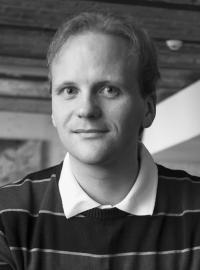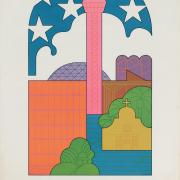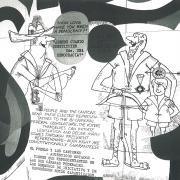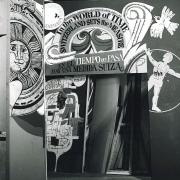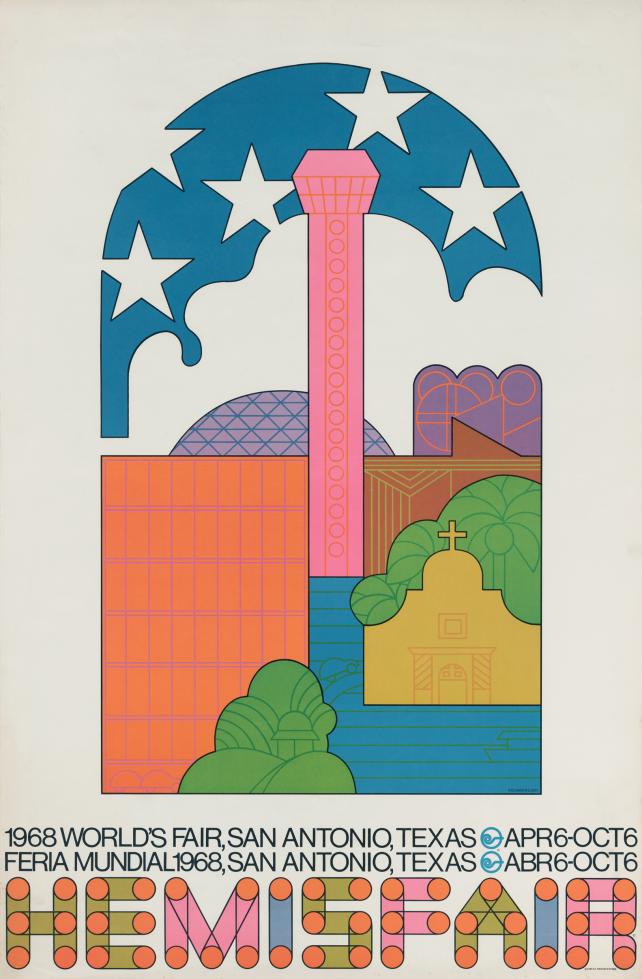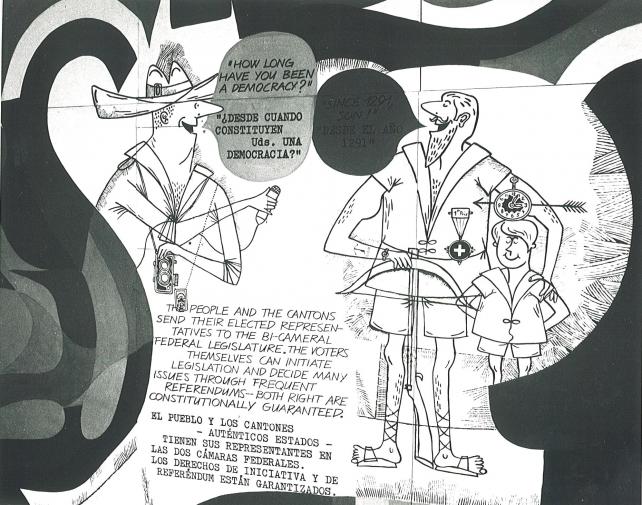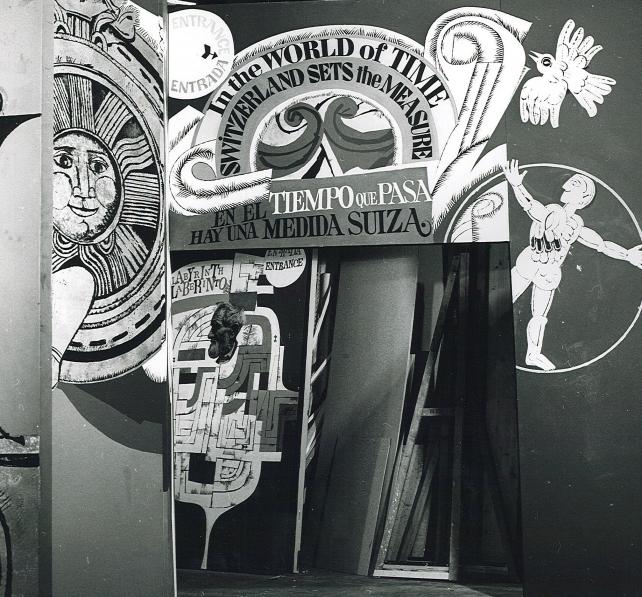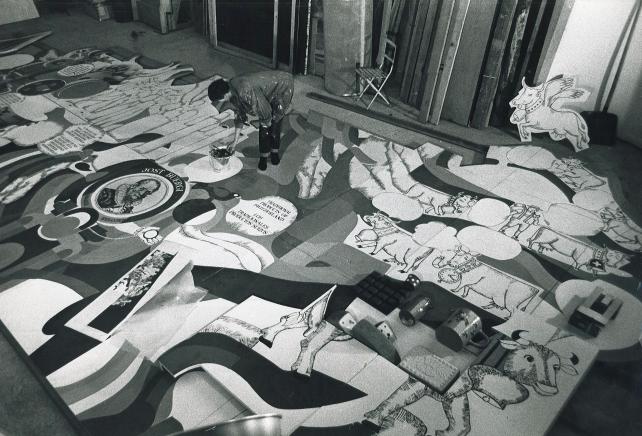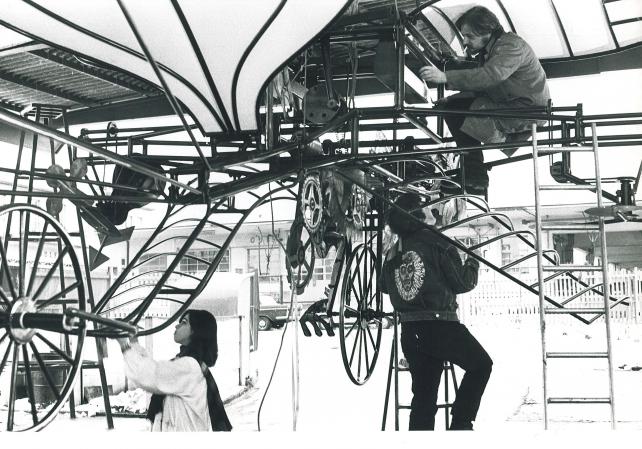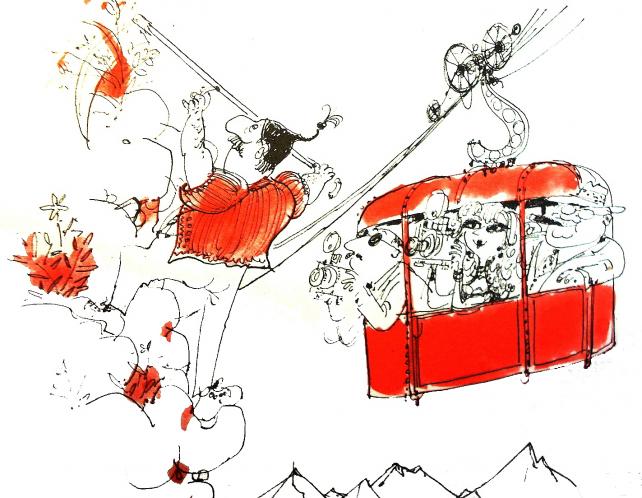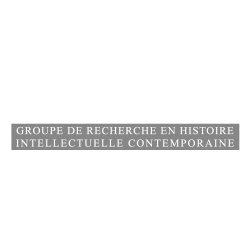San Antonio, 1968: “The bird of contention”
During the summer of 1968, Switzerland took part in HemisFair in San Antonio, the first world’s fair ever in Texas, organised with the intention to celebrate the shared cultural heritage of the Americas and to reaffirm the links to other continents. The composition of the Swiss Pavilion, result of a collaboration between Pro Helvetia and the Swiss Office for Trade, opted for a humorous approach, apt to appeal to the American public.
The centrepiece was a giant metal bird, in the style of Tinguely, gliding around in the middle of the pavilion, gently flapping its wings. It was steered by William Tell who surveyed the surroundings with a telescope. Its passenger was none other than Jean-Jacques Rousseau. A large mural in the playful style of comics and Pop Art, illustrating Switzerland’s history throughout the ages, covered the pavilion’s inner wall.
Conceived by René Creux, a designer from the canton of Vaud, the overall composition intended to show a familiar image of Switzerland from an unusual perspective. According to Pro Helvetia’s press service, the presentation combined preservation of the past and dynamic progress. Although the Swiss pavilion did not challenge traditional values, the relaxed way in which the main national symbols were treated gave rise to criticism from the Swiss abroad, whose point of view was often met with sympathy by diplomatic representatives.
In San Antonio, even the head of the Swiss pavilion was indignant about the form his country’s contribution had taken: The Swiss pavilion has unfortunately exceeded our worst fears, it’s a shame that no one seems to have understood even the main focus (…) instead a hotchpotch was served which probably no one liked safe for (…) the gentlemen of Pro Helvetia.
In addition to the giant bird, the supporting programme also caused controversy. While the Swiss embassy in Washington planned to celebrate the National holiday on the 1st of August by inviting a traditional folk group from the Swiss Colony in New York, Pro Helvetia’s Secretary General Luc Boissonnas protested against such a choice. He thought it was not at all in keeping with the spirit of openness the Foundation had intended to display at the Swiss pavilion. Instead, he proposed a performance of Dimitri the clown. In the United States, Pro Helvetia’s protests were ignored.
The Swiss participation in HemisFair illustrated the breakdown of consensus over the self-portrayal Switzerland wanted to present to the world. Similar conflicts erupted in the course of many Swiss cultural events abroad, as for example about the presentation of Switzerland at the 1992 World Fair in Seville. Finally, it fell to Presence Switzerland, the Confederation’s public relations agency, founded in 2000, to design the Swiss pavilions destined for international exhibitions. Pro Helvetia was left to arrange only the supporting programmes.(tk)
Archives
AFS E2003 (A) 1980/85, Vol. 326

